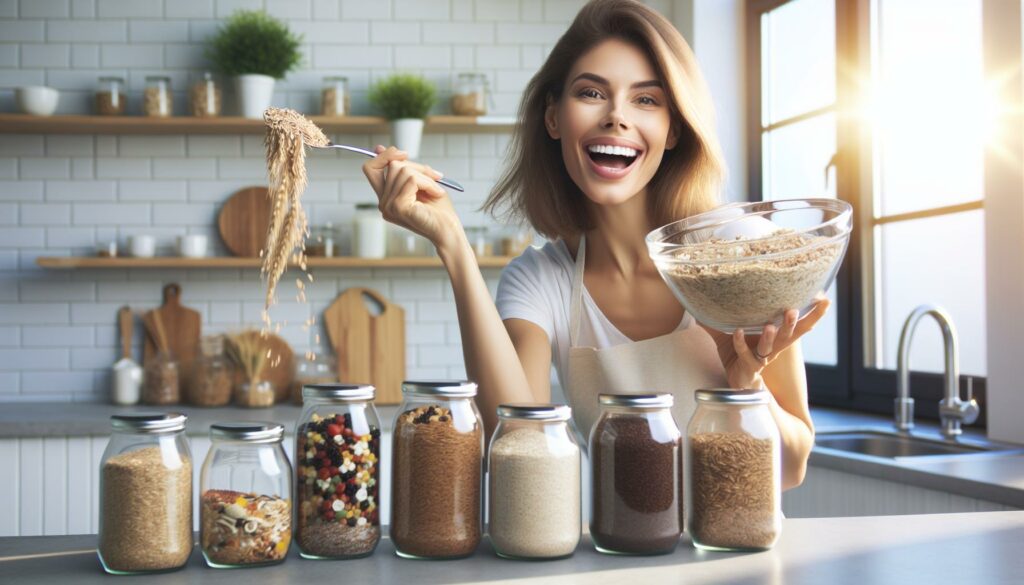Bran might not be the sexiest ingredient in the kitchen but it’s a powerhouse of nutrition that deserves its moment in the culinary spotlight. From fluffy muffins to crispy coatings this humble grain has been quietly revolutionizing healthy cooking while making taste buds dance.
Most people know bran as that boring brown stuff gathering dust in the health food aisle. But with the right techniques it transforms into a versatile ingredient that adds texture moisture and a nutty flavor to countless dishes. Whether you’re a health enthusiast or just someone looking to sneak more fiber into your diet mastering bran cooking techniques can elevate your meals from good to great.
Bran Cooking Techniques
Bran is the outer layer of cereal grains that’s separated during the milling process. This nutrient-rich component contains high concentrations of dietary fiber, protein, minerals, vitamins B complex, vitamin E.
Different Types of Bran
The food industry produces several distinct types of bran from various grain sources:
- Wheat Bran: A coarse outer layer containing high amounts of insoluble fiber, proteins, antioxidants
- Oat Bran: A finer texture rich in soluble fiber called beta-glucan, proteins, iron
- Rice Bran: A light brown powder packed with gamma-oryzanol, antioxidants, vitamin E
- Corn Bran: A yellow-colored grain covering containing resistant starch, fiber, zinc
- Rye Bran: A dark brown variant offering high levels of lignans, phenolic compounds, magnesium
 Health Benefits of Cooking With Bran
Health Benefits of Cooking With Bran
Regular bran consumption provides multiple evidence-based health advantages:
| Benefit | Impact |
|---|---|
| Digestive Health | 1 cup provides 12g fiber |
| Blood Sugar | Reduces glucose absorption by 15% |
| Heart Health | Lowers cholesterol by up to 14% |
| Weight Management | Contains only 125 calories per cup |
- Gut Microbiome: Prebiotic fibers feed beneficial bacteria
- Metabolism: B vitamins enhance energy production
- Bone Health: Minerals strengthen bone density
- Immune Function: Antioxidants protect cells from damage
- Blood Pressure: Potassium helps regulate blood pressure levels
Essential Tips for Cooking With Bran
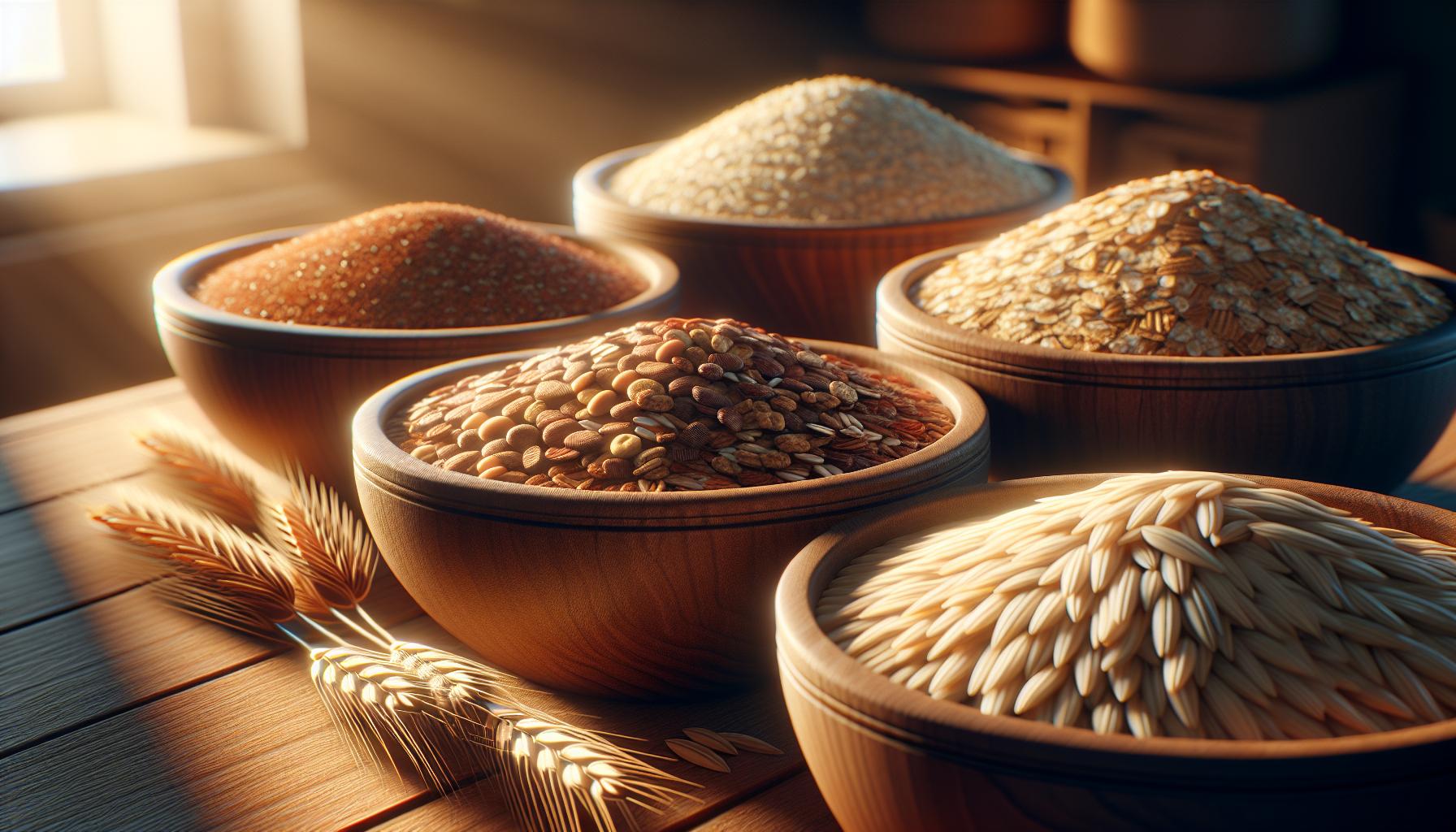
Cooking with bran requires specific techniques to maximize its nutritional benefits while achieving optimal taste and texture. Here’s a comprehensive guide to mastering bran-based cooking.
Proper Storage and Preparation
Store bran in an airtight container in a cool dark place at temperatures below 70°F to maintain freshness for up to 6 months. Refrigeration extends shelf life to 12 months while freezer storage preserves bran for up to 18 months. Toast bran for 5-7 minutes at 350°F before using to enhance its nutty flavor profile. Soak bran in liquid ingredients for 10 minutes before incorporating it into batters or doughs to improve moisture distribution. Rinse rice bran under cool water to remove any excess starch before adding it to recipes.
Measuring and Substitution Guidelines
Replace up to 25% of flour with wheat bran in baking recipes without compromising structure. Add 2 tablespoons of extra liquid for every ¼ cup of bran used in recipes to maintain proper moisture levels. Substitute oat bran for wheat bran in equal amounts in most recipes such as muffins breads pancakes. Use 1 cup of rice bran to replace 1¼ cups of wheat bran due to density differences. Incorporate bran gradually starting with small amounts (2-3 tablespoons) when experimenting with new recipes to assess texture impact.
Best Methods for Incorporating Bran Into Recipes

Incorporating bran into recipes requires specific techniques to maintain texture balance while maximizing nutritional benefits. These methods enhance both the flavor profile and structural integrity of dishes.
Adding Bran to Baked Goods
Bran integration in baked goods follows precise ratios to maintain proper structure while boosting fiber content. A substitution of up to 25% bran for regular flour creates optimal results in most baking recipes. Here’s a practical approach:
| Bran Type | Ratio to Flour | Moisture Adjustment |
|---|---|---|
| Wheat Bran | 1:4 | +2 tbsp liquid per 1/2 cup bran |
| Oat Bran | 1:3 | +1 tbsp liquid per 1/2 cup bran |
| Rice Bran | 1:5 | +1.5 tbsp liquid per 1/2 cup bran |
Pre-soaking bran for 10 minutes in the recipe’s liquid ingredients prevents moisture absorption during baking. Adding extra leavening agents (1/4 teaspoon baking soda per cup of bran) counteracts density. Toasting bran at 350°F for 5 minutes enhances its nutty flavor profile.
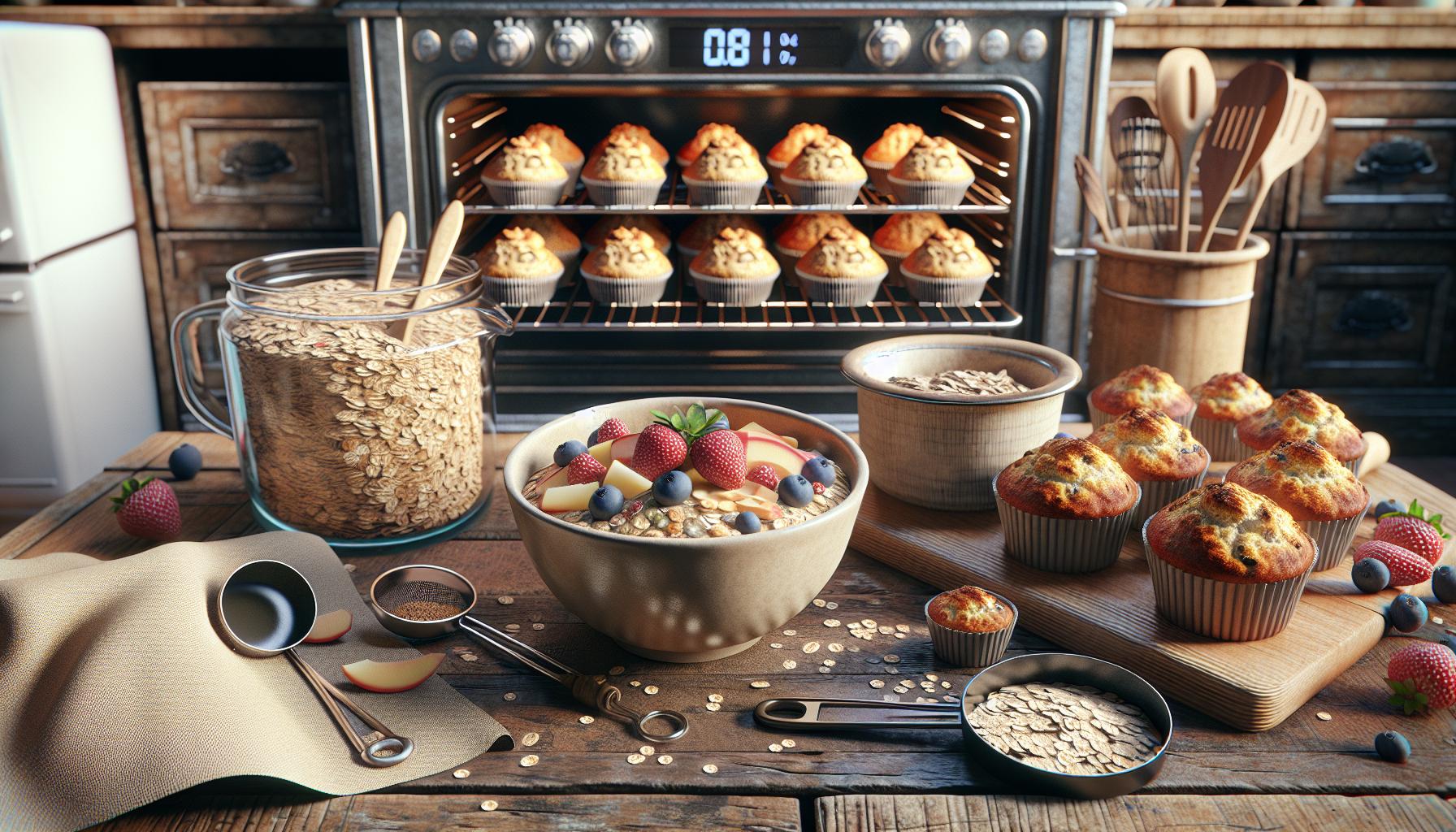 Using Bran in Breakfast Dishes
Using Bran in Breakfast Dishes
Breakfast applications showcase bran’s versatility through multiple preparation methods. Hot cereals incorporate bran through a 1:3 ratio of bran to traditional oats or other grains. Smoothies accept 2-3 tablespoons of bran blended with fruits juices or milk alternatives.
| Breakfast Item | Bran Amount | Preparation Method |
|---|---|---|
| Hot Cereal | 1/3 cup | Stir into cooking liquid |
| Smoothies | 2-3 tbsp | Blend with liquid base |
| Yogurt Parfait | 1/4 cup | Layer between ingredients |
| Pancake Mix | 1/2 cup | Replace portion of flour |
Sprinkling toasted bran on yogurt creates textural contrast while maintaining nutritional benefits. Morning muffins accommodate 1/2 cup of bran per standard recipe serving six portions.
Common Mistakes to Avoid When Cooking With Bran
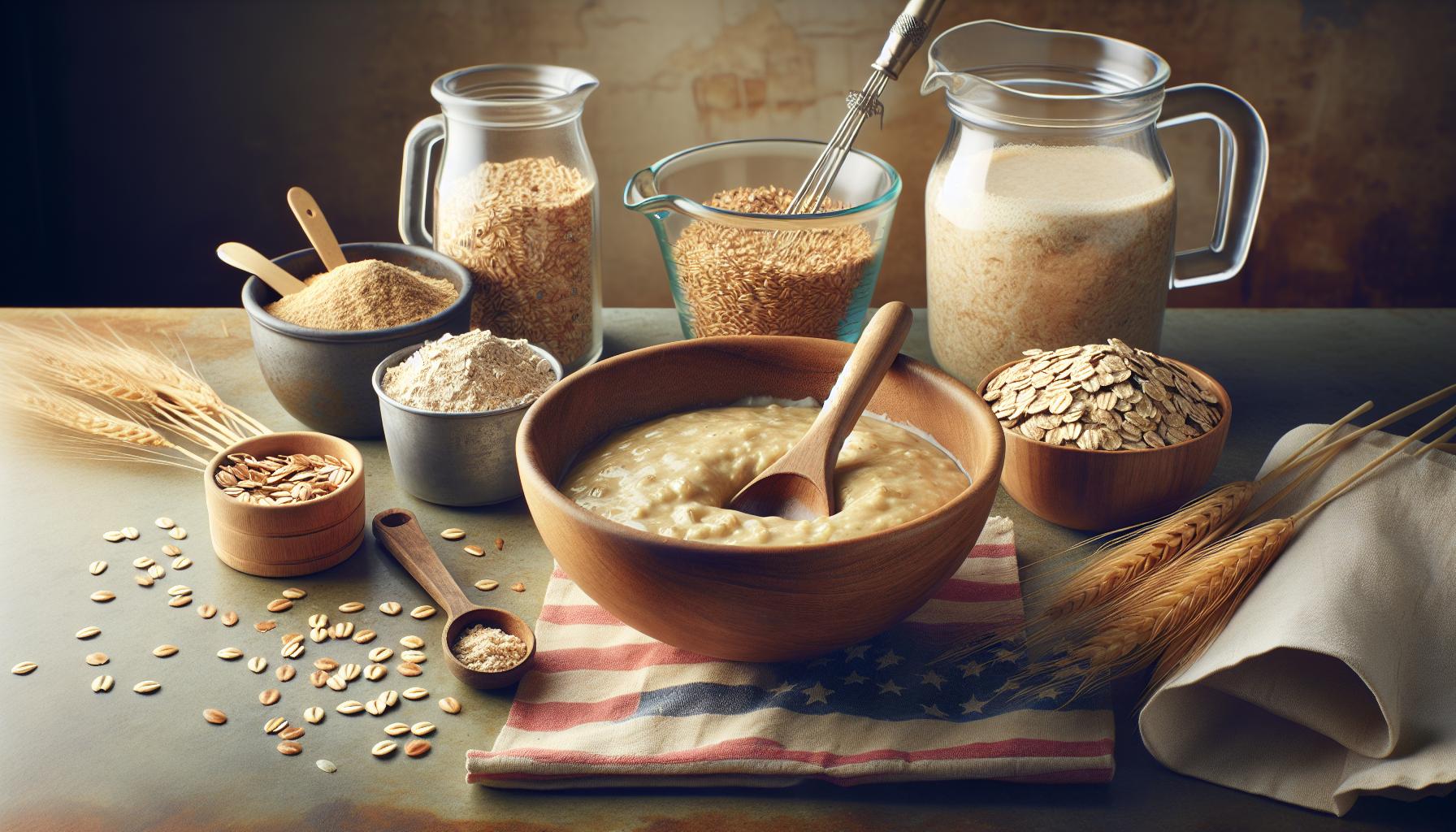
Cooking with bran requires attention to specific techniques to achieve optimal results. Understanding common pitfalls helps create successful bran-enriched dishes while maintaining taste and texture.
Texture and Moisture Issues
Excessive bran incorporation leads to dense, dry baked goods with a gritty texture. Adding more than 25% bran to flour results in structural collapse due to interrupted gluten formation. Moisture absorption varies among bran types: wheat bran absorbs 5.5 times its weight in water while oat bran absorbs 3.5 times. Three key adjustments prevent moisture issues:
- Increase liquid content by 2 tablespoons per 1/4 cup of added bran
- Pre-soak bran in liquid ingredients for 10 minutes before mixing
- Reduce baking time by 5-8 minutes to prevent over-drying
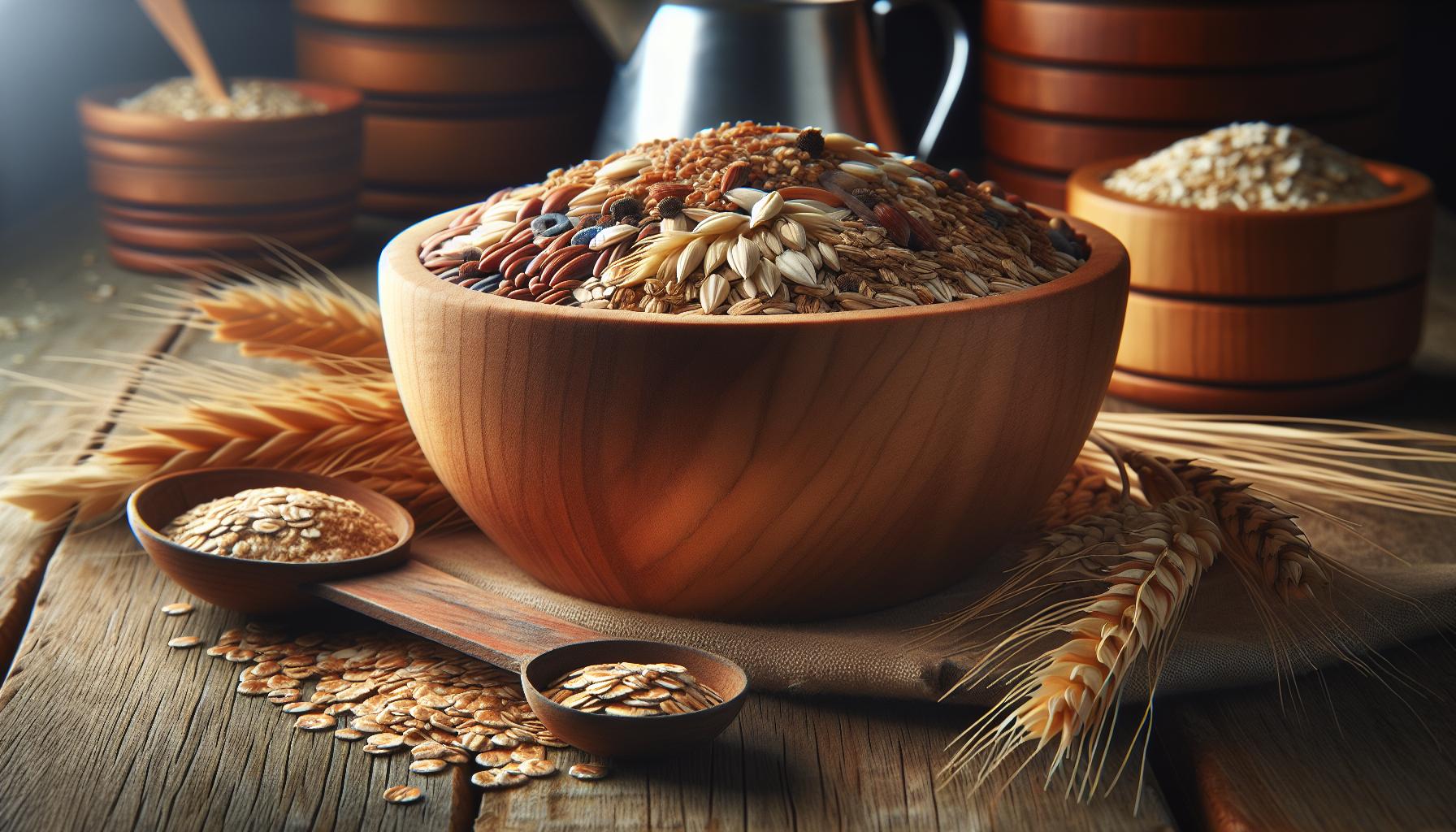 Flavor Balance Tips
Flavor Balance Tips
Bran’s distinctive earthy taste requires careful flavor balancing. Pure bran creates bitter undertones when used in quantities exceeding 30% of dry ingredients. Strategic flavor enhancement includes:
- Pair with sweet ingredients like honey maple syrup or mashed bananas
- Add warm spices: cinnamon nutmeg or cardamom
- Incorporate vanilla extract (1/4 teaspoon per cup of bran)
- Toast bran at 350°F for 5-7 minutes to enhance nutty notes
- Mix complementary ingredients: nuts dried fruits or chocolate chips
Combining these techniques creates balanced flavors while maintaining bran’s nutritional benefits.
Popular Bran Recipes and Applications
Bran transforms everyday recipes into fiber-rich nutritional powerhouses. These practical applications demonstrate bran’s versatility in both sweet and savory dishes.
Bran Muffins and Breads
Bran muffins pack essential nutrients into a convenient breakfast option. Classic bran muffin recipes combine wheat bran with molasses, brown sugar, eggs, milk, and raisins to create a moist texture. Adding yogurt or applesauce enhances moisture retention while reducing fat content. Quick breads benefit from a combination of wheat bran and whole wheat flour at a 1:3 ratio. Popular variations include:
- Banana bran bread with honey and walnuts
- Zucchini bran muffins with cinnamon
- Carrot bran breakfast loaf with dates
- Apple oat bran muffins with maple syrup
Savory Bran Dishes
Bran enhances savory dishes with texture and nutritional benefits. Rice bran creates crispy coatings for fried foods while wheat bran adds depth to casseroles. Common applications include:
- Crispy chicken coating using rice bran and herbs
- Vegetable gratins topped with wheat bran streusel
- Meatloaf with oat bran filler
- Savory crackers using mixed grain brans
- Veggie burger patties incorporating wheat bran
Bran also serves as a thickening agent in soups and stews, absorbing excess moisture while adding fiber content. Mixing bran with breadcrumbs creates a nutrient-dense coating for baked fish or vegetables.
Delightful Textural Element to Meals
Mastering bran cooking techniques opens up a world of culinary possibilities that blend nutrition with taste. The key lies in understanding proper measurements proportions and storage methods while avoiding common pitfalls that can affect texture and flavor.
Armed with these techniques anyone can transform this fiber-rich ingredient into delicious dishes ranging from breakfast staples to savory dinner options. Whether it’s creating moist muffins developing crispy coatings or enhancing everyday recipes bran proves to be a valuable addition to any kitchen.
The journey to incorporating bran into daily cooking doesn’t need to be complicated. With the right approach this nutritional powerhouse can elevate both the health value and taste of countless recipes while adding a delightful textural element to meals.

